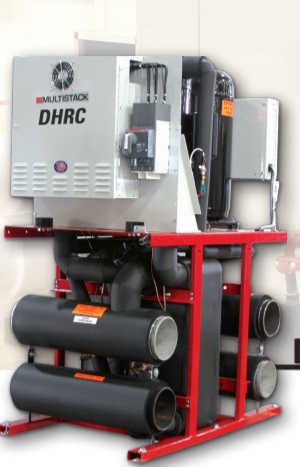
DHRC Scroll Modular Catalog
See product catalogue During the air conditioning and cooling process, heat is generated that is usually discarded to the atmosphere. This practice has existed for as long as there have been heating and cooling systems. There are many negatives associated with disposing of heat as waste. Buildings can use as much as twice the energy to provide cooling and dispose of heat as waste when compared to recovering and using the otherwise wasted heat. Even in mid-summer, most buildings require some heat for proper humidity control, potable hot water and other hot water applications. Heat recovery addresses this waste, improving building efficiency, reducing carbon footprint and significantly reducing energy use and cost. Currently, USGBC (U.S. Green Building Council) LEED™ (Leadership in Energy Efficient Design) direction is to continuously improve upon established/accepted ASHRAE efficiency guidelines. A DHRC chiller can help you achieve your efficiency goals. The heat recovery concept has existed since the early 1970s, but it was not easy to implement early on due to the size of chillers and the very limited hot water temperatures achievable. The very nature of the modular DHRC chiller transforms the application from difficult to simple because it provides simultaneous control of hot and cold water. Most buildings have a constant heating and cooling requirement. By identifying the maximum and minimum heating and cooling loads it becomes easy to size a DHRC from 10 to 900 tons capacity per array. This allows the DHRC to become an integral part of a building’s chiller and boiler systems—especially since the DHRC can produce water at up to 180° F. When applied to a building system as a supplement, the DHRC can contribute to the cooling process during spring, summer and fall months while supplying building hot water for free. During the winter, by directing the DHRC to focus on the constant cooling load of the building core such as a data center or phone room, the DHRC continues to supply hot water—essentially for free while eliminating the need to consume natural gas or other energy sources